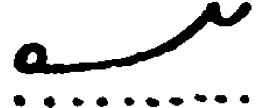A Manual of Orthographic Shorthand: The Cambridge System
by Hugh L. Callendar, M.A., Fellow of Trinity College, Cambridge. 1891.
Rendered into Markdown by Jeremy W. Sherman based on the version made available by Google Books.

This version of Hugh L. Callendar’s A Manual of Orthographic Cursive Shorthand by Jeremy W. Sherman is licensed under a Creative Commons Attribution-ShareAlike 4.0 International License.
Based on a work at https://books.google.com/books/about/A_Manual_of_Orthographic_Cursive_Shortha.html?id=kQ5SAAAAYAAJ.
Permissions beyond the scope of this license may be available at https://jeremywsherman.com/.
Introductory Remarks
The present system is an adaptation of the alphabet and principles of Cursive Shorthand to the common orthography.
Two and a half years’ experience in teaching Cursive has convinced me that the difficulties which beginners find in learning to spell correctly by sound are much greater than I had previously imagined; and that it is unadvisable to attempt to introduce a phonetic system of shorthand at an early stage in education.
I have every reason to believe that the present adaptation of Cursive to the common spelling will be found much more simple and easy to learn than any of the phonetic systems at present in vogue. There is very little to learn beyond an alphabet of 26 characters, and the method of joining them. In fact many students have succeeded in reading and writing the present system with nothing but the bare alphabet to guide them.
With the exception that the method of spelling adopted is orthographic instead of phonetic, no changes has been made in the fundamental principles of the system. These have been already discussed and explained in the introduction to the Manual of Cursive Shorthand. It is needless therefore to repeat them here.
The characters of the alphabet are for the most part the same as in Phonetic Cursive; but the change of spelling has made it necessary to rearrange some of them.
Advantage has been taken of this rearrangement to introduce several improvements in matters of detail, which have been suggested by the experience of teachers. The general style of the writing has been made even more flowing and lineal than before. The awkward backslope \ has been eliminated from the alphabet, and restricted to use in terminations, where it is comparatively harmless. [Jeremy: It’s used for -ing.]
The writing requires no great niceties of penmanship. No distinction is made, as in other systems, between thin strokes and thick. Only two sizes of character are employed, instead of three or four. The vowel characters are connecting strokes joined in their natural order together with the consonants. The great majority of the signs are written on the ordinary slope of longhand, and the forms and distinctions between the characters are such as are already familiar to every one who has learnt to write in the ordinary style.
The system is strictly alphabetic. A letter is always represented by its alphabetic character. There are no alternative hooks and loops, or halving and doubling principles, to puzzle and distract the student. A word can be written in one way only. The rules are consequently very few, definite, and easy to apply.
In learning the system the student should work straight through the alphabet and following pages, writing and analysing every example as he comes to it. By the time he reaches [the end of the joining rules] he will thus have become thoroughly familiar with the alphabet. He will then be able to read through the specimen [of the fully-written style], every word of which is spelt in full.
The Cursive Alphabet
| Letter | Example |
|---|---|
A |
 ab, ab,  act act |
B |
 bad bad |
C |
 cabby cabby |
D |
 adder adder |
E |
 fed fed |
F |
 left left |
G |
 get get |
H |
 hit hit |
I |
 city city |
J |
 jug jug |
K |
 luck luck |
L |
 like like |
M |
 melt melt |
N |
 know know |
O |
 proof proof |
P |
 plate plate |
Qu |
 query query |
R |
 roller roller |
S |
 sort sort |
T |
 trust trust |
U |
 upper upper |
V |
 wavy wavy |
W |
 wow wow |
X |
 exit exit |
Y |
 eyes eyes |
Z |
 size size |
| The arrows show the directions in which the characters are written. | |
Doubled Letters
Doubled letters are shown, not by repeating the character, but by putting a dot below; thus,  odd,
odd,  too.
too.
Exception:  ee; thus,
ee; thus,  sleep, cp.
sleep, cp.  sup.
sup.
General Rules
Orthographic Spelling
All words, when written in full, are spelt according to the common orthography. The characters are to be joined together smoothly, without lifting the pen, or making any unnecessary angles or breaks. All the more common and important joinings are fully explained and illustrated in ‘How to Write and Join the Characters’.
Diphthongs
When two vowels come together forming a ‘diphthong’, the angle between them is slurred or rounded off into a continuous curve; thus,  ai =
ai =  ,
,  oy =
oy =  ,
,  ou =
ou =  ,
,  eau =
eau =  .
.
When, however, the vowels are separately sounded, either the characters are separated, or the angle between them is marked, as in the words  re-enter,
re-enter,  Oölite,
Oölite,  Deä,
Deä,  create,
create,  Leo,
Leo,  fiasco,
fiasco,  serious,
serious,  fuel,
fuel,  poem.
poem.
The Two Sizes of Character
The two sizes of character must be carefully distinguished, just as [lowercase] ‘c’ and [uppercase] ‘C’,  and
and  , are distinguished in longhand. [Jeremy: Note that cursive lowercase L is basically a vertically stretched cursive lowercase E.] The first letter of a word is generally written so as to end on the line. The beginner should write between double-ruled lines at first, as in the following examples:
, are distinguished in longhand. [Jeremy: Note that cursive lowercase L is basically a vertically stretched cursive lowercase E.] The first letter of a word is generally written so as to end on the line. The beginner should write between double-ruled lines at first, as in the following examples:

[Jeremy: Here’s a ready-to-print double-ruled paper template for US letter paper.]
Dividing a Word
A word may always be divided if it happens to be convenient. The necessity for this, however, very seldom arises except in the case of compound words.  lawsuit,
lawsuit,  Woolwich,
Woolwich,  virgin.
virgin.
Punctuation
Punctuation is effected in the usual way, except the Hyphen  , and the Dash
, and the Dash  . [Jeremy: They are the normal hyphen and dash, except a vertical stroke intersects each in the middle, like a plus sign. This distinguishes them from raised A (“and”) and raised O (“though”).]
. [Jeremy: They are the normal hyphen and dash, except a vertical stroke intersects each in the middle, like a plus sign. This distinguishes them from raised A (“and”) and raised O (“though”).]
Initial Capitals
Initial capitals are marked thus  .
.  Jack,
Jack,  Clay,
Clay,  S.E.,
S.E.,  L.S.W.R.
L.S.W.R.
How to Write and Join the Characters
In the following alphabetic list are given examples and explanations of all the joinings which are likely to cause the beginner any difficulty.
You can jump to a specific letter or significant joining:
- A
 is a short horizontal connecting stroke. It forms the diphthongs
is a short horizontal connecting stroke. It forms the diphthongs  ai,
ai,  au,
au,  ay.
ay.
- Ay may be curved either way. The form
 is used whenever it joins more clearly or easily than the form
is used whenever it joins more clearly or easily than the form  , as after
, as after 





 thus,
thus,  days,
days,  quay; cp.
quay; cp.  says,
says,  hay. [So basically, use the smoothed y-a form after forward horizontal curves and after descenders. See also when to use the curved -ing, which is basically a double-size smoothed y-a.]
hay. [So basically, use the smoothed y-a form after forward horizontal curves and after descenders. See also when to use the curved -ing, which is basically a double-size smoothed y-a.]
- Ay may be curved either way. The form
-
B
 is written like the letter
is written like the letter  , but with a more open loop and without the hook upwards at the end. It forms the compounds:
, but with a more open loop and without the hook upwards at the end. It forms the compounds: - C
 is written like the letter c, but it is not turned up at the end, unless followed by e.
is written like the letter c, but it is not turned up at the end, unless followed by e.
-
D
 and
and  t have similar characters, but that for d is made much flatter, and about three times as long. It forms the compounds:
t have similar characters, but that for d is made much flatter, and about three times as long. It forms the compounds:[Jeremy: The Supplement published a year later suggests in ordinary style always omitting the D from the prefix ADJ-, which is probably why no example is given.]
- E
 is a short upstroke; it must not be confused with
is a short upstroke; it must not be confused with  s, which is written downwards.
s, which is written downwards.
- Ea
 may be curved either way like ay. The form
may be curved either way like ay. The form  is used except after
is used except after 




 . An angle must always be made after
. An angle must always be made after  before
before 
 or
or  ; thus
; thus  seat,
seat,  seas,
seas,  eat,
eat,  real,
real,  pearl,
pearl,  years. [Yes, this means the default form for ea is a smoothed a-e, so it’s usually backwards. You only use the smoothed e-a form after the consonants – including y and excepting c – in “subcompany”.]
years. [Yes, this means the default form for ea is a smoothed a-e, so it’s usually backwards. You only use the smoothed e-a form after the consonants – including y and excepting c – in “subcompany”.] - The diphthongs ee
 , ei
, ei  , ie
, ie  are all written upwards much more steeply than u.
are all written upwards much more steeply than u.  steep, cp.
steep, cp.  stupid. eu
stupid. eu  , ew
, ew 
 new.
new.
- Ea
- F

-
G
 is like the left-hand half of a capital G. It forms the compounds:
is like the left-hand half of a capital G. It forms the compounds: -
H
 is a large circle or backward loop beginning at the bottom. It is distinguished from ch
is a large circle or backward loop beginning at the bottom. It is distinguished from ch  by the way it is joined; thus,
by the way it is joined; thus,
 hat,
hat,  chat,
chat,  what,
what,  which
which - I
 is a short upstroke, like e, but dotted.
is a short upstroke, like e, but dotted.
-
K
 is like
is like  g, but is turned the other way. It is joined in the same way as
g, but is turned the other way. It is joined in the same way as  f.
f. - L
 is a small circle or loop like
is a small circle or loop like  r, but is turned the opposite way, clockwise. [Jeremy: L leaps clockwise and hangs below, R runs in reverse and stands above.]
r, but is turned the opposite way, clockwise. [Jeremy: L leaps clockwise and hangs below, R runs in reverse and stands above.]
- When standing by itself as an initial,
 L is distinguished from
L is distinguished from  R by prefixing a short hair-stroke showing the way it is turned.
R by prefixing a short hair-stroke showing the way it is turned. -
In other cases the distinction is obvious; cp.

black 
bread 
clay 
crow 
addle 
dry 
flow 
fro 
glad 
grade 
play 
pray 
little 
litre 
slay 
Israël 
held 
herd 
world 
already -
Other compounds are:
- When standing by itself as an initial,
- N
 is like the first hook of the letter n.
is like the first hook of the letter n.
- O
 is made about three times as long as
is made about three times as long as  a.
a.
- P
 is a long downstroke, like the upper half of the stroke of the letter
is a long downstroke, like the upper half of the stroke of the letter  . It is made about three times as long as
. It is made about three times as long as  s.
s.
-
Qu
 is like the lower loop of the letter
is like the lower loop of the letter  ; it is turned the opposite way to
; it is turned the opposite way to  j.
j.  esquire.
esquire. - R
 is a small circle like
is a small circle like  L, but is always turned the opposite way, like the loop of the longhand letter
L, but is always turned the opposite way, like the loop of the longhand letter  . For examples, see L.
. For examples, see L.
- The compound
 rce is written like the
rce is written like the  form of the longhand letter e; thus,
form of the longhand letter e; thus,  fierce. [Jeremy: I’ve never seen this style of cursive e used outside Callendar’s own writing. It is like the uppercase cursive E made like a mirrored, round 3, only it is written the height of a lowercase letter, and has an added leading hairstroke crossing above the midline to make the top circle of the e. The result is basically the counter-clockwise Orthic r sitting atop a half-height Orthic c with a rise at the end for the e.]
fierce. [Jeremy: I’ve never seen this style of cursive e used outside Callendar’s own writing. It is like the uppercase cursive E made like a mirrored, round 3, only it is written the height of a lowercase letter, and has an added leading hairstroke crossing above the midline to make the top circle of the e. The result is basically the counter-clockwise Orthic r sitting atop a half-height Orthic c with a rise at the end for the e.] -
Other compounds are:
- The compound
- S
 is a short downstroke like the tick at the beginning or end of a capital
is a short downstroke like the tick at the beginning or end of a capital  .
.
- T
 is like the hook at the end of the letter
is like the hook at the end of the letter  .
.
- Th
 is written like the letter
is written like the letter 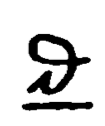 . [Jeremy: That’s a looped-through version of the d Callendar often writes at the end of a word, as seen for example in “end”
. [Jeremy: That’s a looped-through version of the d Callendar often writes at the end of a word, as seen for example in “end”  . That word also shows the funky e Callendar uses to explain how to write the compound rce.]
. That word also shows the funky e Callendar uses to explain how to write the compound rce.] -
At the end of a word, the circle of the h need not be completed; thus,
-
 with
with -
 both
both
-
-
Other compounds are:
- Th
- U
 is a long up-stroke on a flat slope, making an angle of about
is a long up-stroke on a flat slope, making an angle of about  30° with the line.
30° with the line.
-
V
 is distinguished from
is distinguished from  ste by its size; cp.
ste by its size; cp.-
 minster
minster -
 Minver
Minver -
 stew
stew -
 view
view
-
- W
 is an upward hook, which may be turned either way.
is an upward hook, which may be turned either way.
-
The first [clockwise] form is always used at the beginning of a word, except before r. Thus
-
 way
way -
 woe
woe -
 wet
wet -
cp.
 write
write
-
- wr
 is distinguished from
is distinguished from  th by its size.
th by its size. - wh
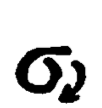 is made by enlarging the w hook so as to look like the h- circle; cp.
is made by enlarging the w hook so as to look like the h- circle; cp.  who,
who,  ha.
ha. -
ws
 ; at the end of a word the addition of the s tick to the w hook forms a loop; thus
; at the end of a word the addition of the s tick to the w hook forms a loop; thus-
 sews
sews -
 cows
cows -
 laws
laws
-
-
Other compounds are:
-
- X

-
-
 yacht
yacht -
 yet
yet -
 yore
yore -
 yule
yule
-
-
-
 daze
daze -
 Fitz
Fitz -
 puzzle
puzzle
-
Specimen of Fully-Written Style
The preceding rules and examples will enable the student to read the (1) specimen of writing given on the opposite page, of which this page is a (2) key. Every word of this specimen is written in full letter for letter (3) just as it is here spelt. Nothing is left out. The small figures in (4) brackets show where each line of the shorthand ends, so that the stu-(5)dent may have no difficulty finding his place in the key, if (6) he happens to be at a loss to make out a word. (7)
The ability to write any word in full just as it is spelt, is (8) of the greatest value, especially for the correct spelling of proper (9) names and foreign words, which is often a serious matter, (10) and is quite impossible in any phonetic system. (11)
Even when thus written in full the system is very brief as contrasted (12) with ordinary writing. For practical purposes a still further increase (13) of brevity may be effected without any sacrifice of clearness, by (14) the use of shorter out-lines for such words as and, the, (15) for, to, etc., which occur so often in every page of English (16), and by the employment of a few other simple methods of (17) abbreviation, which are illustrated in the sections that follow, (18) and which constitute the ordinary style of Cursive.
[Jeremy: The specimen ends here.]
In the reporting style two new methods are introduced, namely ‘expression by mode’ and ‘phraseography.’ These, together with the extension of the methods used in the ordinary style, combine to render the reporting style of Cursive as short, consistently with clearness, as any system of writing can possibly be made. It is intended to treat this subject more fully in a future publication, but the methods are so simple that it has been thought worth while to include a short sketch of them in the present manual. It is probable that the hints given in “Hints for the Reporting Style” will be sufficient to enable any intelligent student to apply them successfully for himself without further assistance.
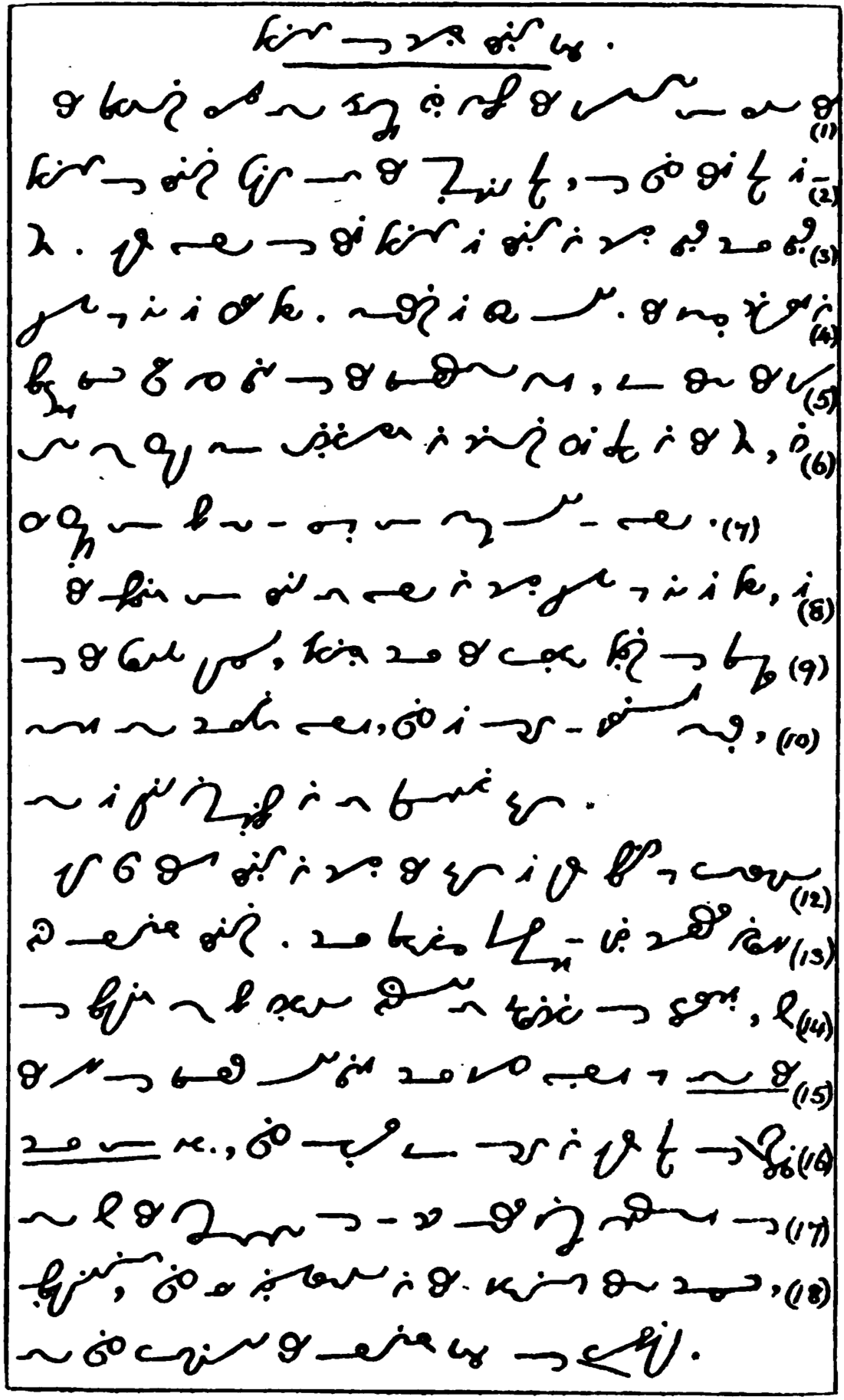
Ordinary Style
Abbreviations
The following methods of abbreviation are used in correspondence and in ordinary writing.
Omit A and O before M and N
The vowels a and o are omitted before m and n, except initially and in rare words; thus,  can or con,
can or con, ne.png) al(o)ne,
al(o)ne, m(a)n.png) w(o)m(a)n. An omission of this kind can always be corrected, if desired, by writing the omitted character above; thus,
w(o)m(a)n. An omission of this kind can always be corrected, if desired, by writing the omitted character above; thus,  band,
band,  bond.
bond.
Drop the dots
Dots are generally omitted in common words such as it, in, is, if, him, his, will. [Jeremy: Sic, without examples of the outlines in Orthic. Note this method includes omitting both dots above the letter i and dots below doubled letters. Both omissions are used in writing “will.”]
Replace TH- with writing higher
Initial Th is omitted in all common words. The omission is shown by writing the rest of the word above the line; thus,  the,
the,  they,
they,  this,
this,  them,
them,  tho’,
tho’,  that.
that.
- Exception: The character a
 written above the line stands for the word and.
written above the line stands for the word and.
Let -Y stand unaltered
In adding inflections to words ending in y, the y is not changed to i or ie; thus,  applyd,
applyd,  trys,
trys,  easyst,
easyst,  happyr.
happyr.
Abbreviate common endings
Some common terminations are abbreviated as shown in the following list:
-
Ed. The e may generally be omitted; thus,
-
 us’d
us’d -
 kiss’d
kiss’d -
 stirr’d
stirr’d
-
-
Ful
 fl
fl-
 useful
useful -
 beautyfully
beautyfully
-
-
Hood
 hd
hd manhood
manhood
-
Ing
 ing
ing-
 using
using -
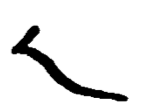 saying
saying -
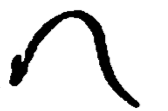 seeming
seeming - This form is used only for the inflection -ing and not in such words as
 king; cp.
king; cp.  sing,
sing,  singing.
singing. - It is better to curve the stroke, thus
 , after
d,
m,
n,
t,
v, and vowels [here including y as in “scrying”].
, after
d,
m,
n,
t,
v, and vowels [here including y as in “scrying”].
-
-
Ight
 t, below
t, below night
night light
light
-
Ion
 un, dotted if necessary
un, dotted if necessary action
action
-
Ity
 y, above
y, aboveities.png) ab(il)ities
ab(il)itiesity.png) pec(uliar)ity
pec(uliar)ity
-
Less
 ls
ls thankless
thankless fearlessness
fearlessness
-
Ly
 y below
y below nearly
nearly easily
easily dailies
dailies
-
Ment
 mt
mt comment
comment arrangement
arrangement
-
Ness
 ns [J: Don’t use this. Write ness as detached ess instead per the general method of abbreviation. See ‘ness’ in the Supplement. Then per that method use ns for ations.]
ns [J: Don’t use this. Write ness as detached ess instead per the general method of abbreviation. See ‘ness’ in the Supplement. Then per that method use ns for ations.] happyness
happyness thoughtfulness
thoughtfulness
-
Ough
 o’
o’ ought
ought brought
brought
-
Ther
 hr
hr others
others
-
Ward
 ard
ard towards
towards
[J: Note that each links to itself, to aid in teaching fellow writers.]
The General Method
The general method of abbreviating long words is to write only the first syllable, and, if necessary, to indicate the termination by writing the last letter or two, separated by a small interval from the first part; thus,
-
 dif(feren)t
dif(feren)t -
 dif(feren)ce
dif(feren)ce -
 ack(nowledge)
ack(nowledge) -
 esp(eciall)y
esp(eciall)y -
 cir(cumstan)ce
cir(cumstan)ce -
 extr(aordinar)y
extr(aordinar)y -
 rep(resentati)ve
rep(resentati)ve
In many cases the termination may be joined, as in the last three examples.
Phrases
Words may often be joined together provided that they are closely connected in sense. This applies especially to common words, auxiliaries, and particles, such as those contained in the list [of common words in the next section]: ex. gr.
 able to do
able to do as it is
as it is I am not
I am not I have had
I have had I shall be very
I shall be very to be
to be ought to have been
ought to have been with a view to
with a view to
Abbreviations for Common Words
The following is a list of the abbreviations for common words used in the corresponding style. Many of them are such as are commonly used in longhand. [J: Note that each links to itself, to aid in teaching fellow writers.]
Specimens of the Ordinary Style
The Introductory Remarks


Key
See the first section. :)
From Macaulay’s History
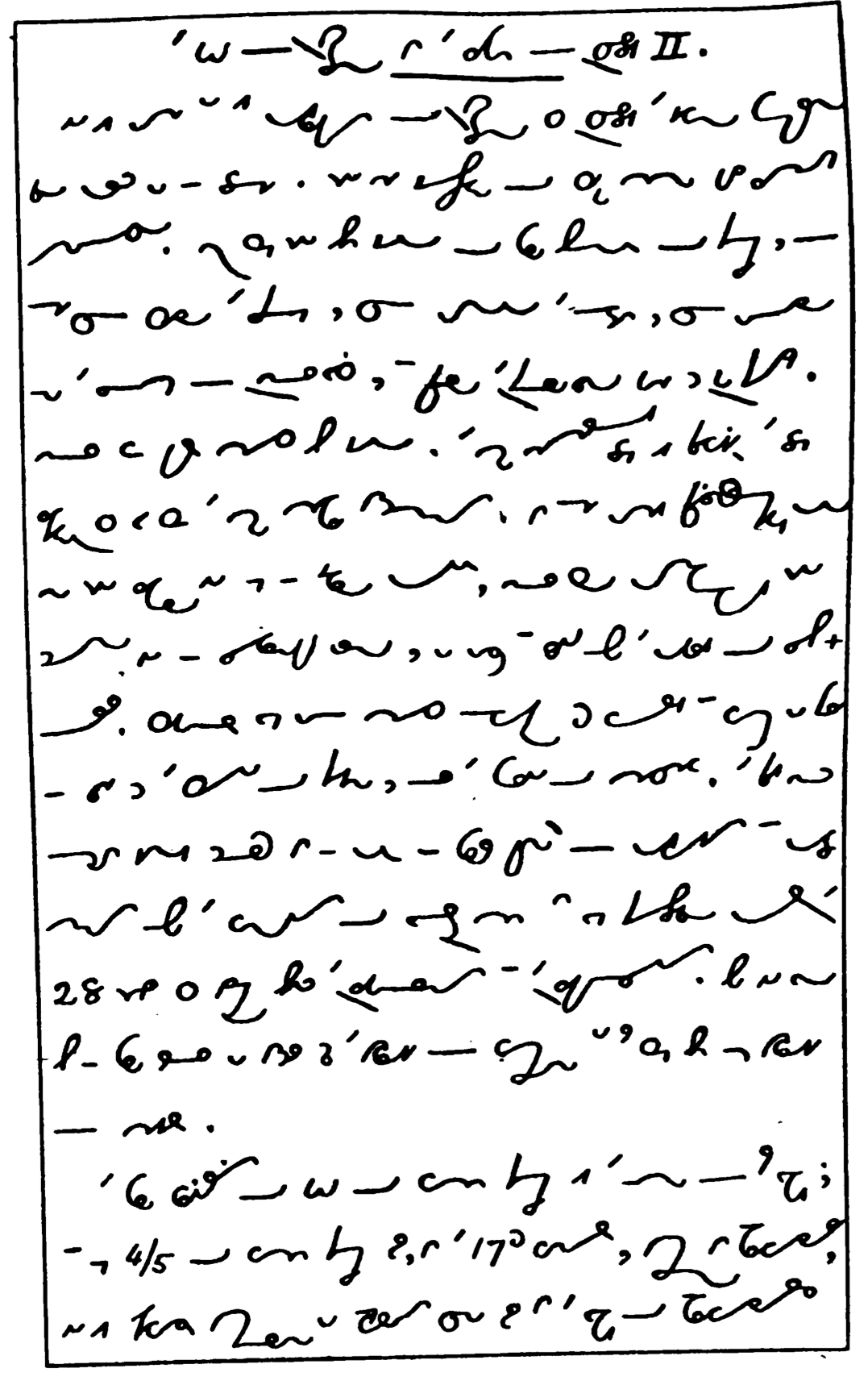

Key
The State of England in the Reign of Charles II.
It is time that this description of the England which Charles the Second governed should draw to a close. Yet one subject of the highest moment still remains untouched. Nothing has yet been said of the great body of the people, of those who held the ploughs, who tended the oxen, who toiled at the looms of Norwich, and squared the Portland stone for St Paul’s. Nor can very much be said. The most numerous class is precisely the class respecting which we have the most meagre information. In those times philanthropists did not yet regard it a sacred duty, not had demagogues yet found it a lucrative trade, to talk and write about the distress of the labourer. History was too much occupied with the Courts and camps to spare a line for the hut of the peasant, or the garret of the mechanic. The press now often sends forth in a day a greater quantity of discussion and declamation about the condition of the working man than was published during the twenty-eight years which elapsed between the Restoration and the Revolution. But it would be a great error to infer from the increase of complaint that there has been any increase of misery.
The great criterion of the state of the common people is the amount of their wages; and as four-fifths of the common people were, in the seventeenth century, employed in agriculture, it is especially important to ascertain what were then the wages of the agricultural [Page 2] industry. On this subject we have the means of arriving at conclusions sufficiently exact for our purpose.
It seems clear that the wages of labour, estimated in money, were, in 1685, not more than half of what they now are; and there were few articles important to the working man of which the price was not, in 1685, more than half of what it now is. Beer was undoubtedly much cheaper in that age than at present. Meat was also cheaper, but was still so dear that hundreds of thousands of families scarcely knew the taste of it. In the cost of wheat there has been very little change. The average price of the quarter, during the last 12 years of Charles the Second, was fifty shillings. Bread, therefore, such as is now given to the inmates of a workhouse, was then seldom seen, even on the trencher of a yeoman or of a shopkeeper. The great majority of the nation lived entirely on rye, barley, and oats.
The produce of tropical countries, of mines, and of machinery, was positively dearer than at present. Among the commodities for which the labourer would have had to pay higher in 1685 than his posterity now pay, were sugar, salt, coals, candles, soap, shoes, stockings, and generally all articles of clothing and all articles of bedding. It may be added, that the old coats and blankets would have been, not only more costly, but less serviceable, than the modern fabrics.
St John II

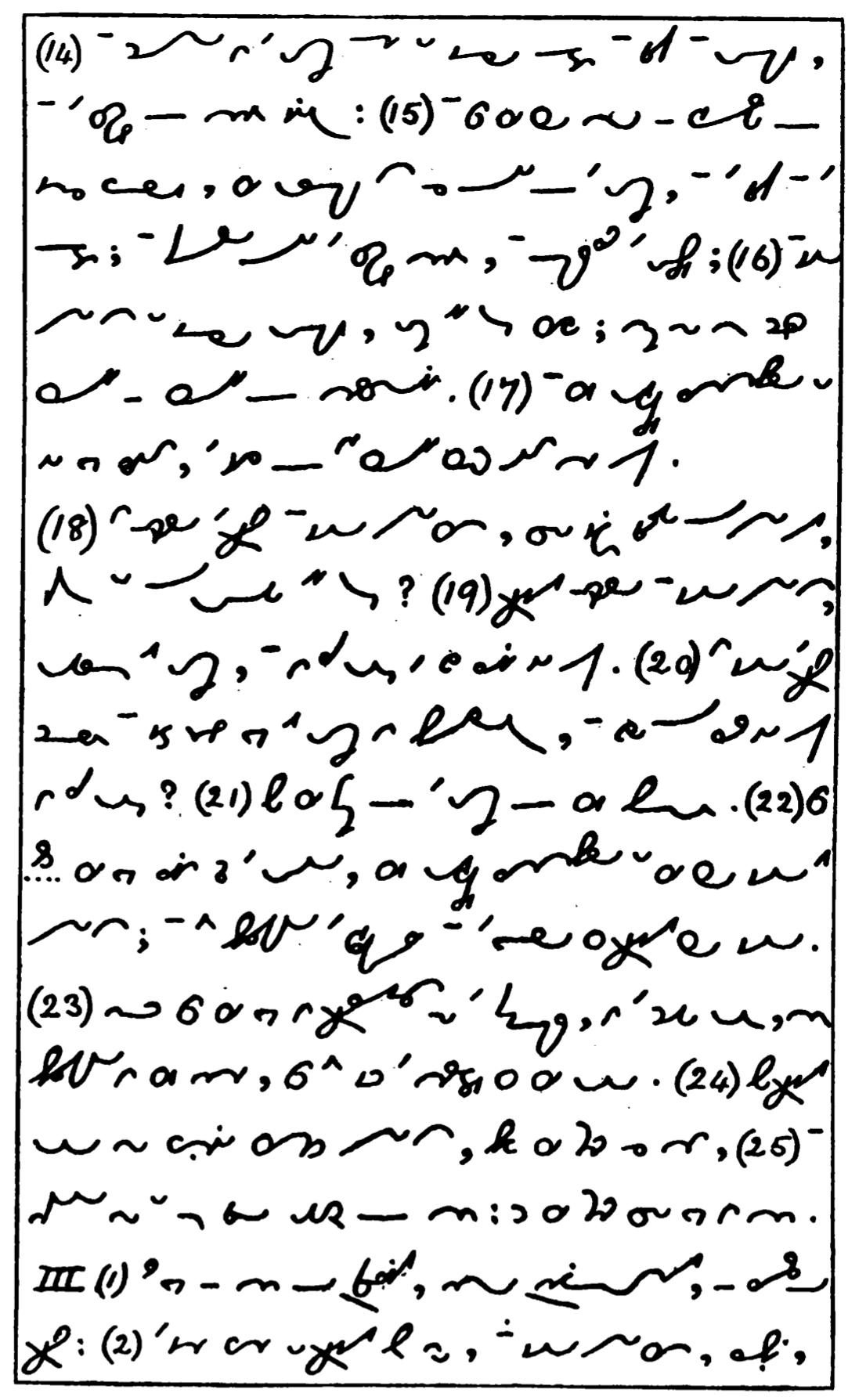
[For the Key to the John II passage, see any copy of the King James Version of the Bible.]
Application to Foreign Languages
Owing to the peculiar character of the vowel system and the facility with which the characters can be joined, the alphabet of Orthographic Cursive is immediately applicable with very slight modifications to almost all foreign languages. It is impossible here to work out the subject fully, but the following specimens will be of interest as shewing the capabilities of the system. They are written almost in full, containing only one or two trifling abbreviations, such as -mt for -ment, analogous to those used in the ordinary style of English.
French
Adaptations
- English y is used to write French é
 .
. - Both forms of English -ing are used instead to write French ée
 .
.
Specimen
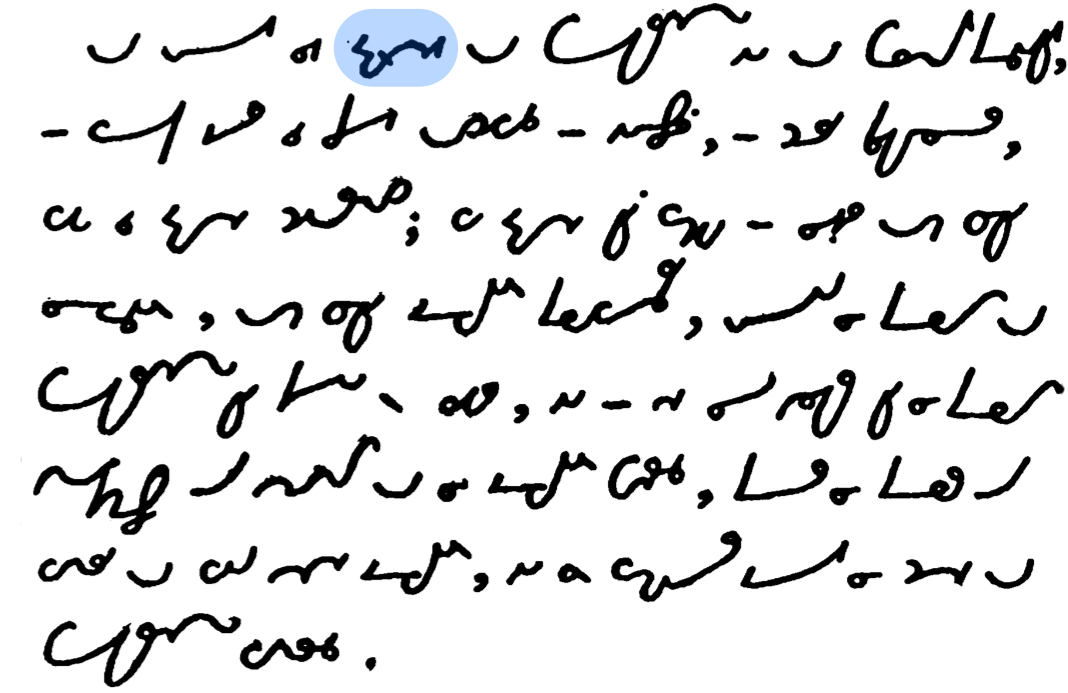
Key
De tous les systèmes de gouvernement et de garanties politiques, à coup sûr le plus difficile à établir, à faire prévaloir, c’est le système fédératif ; ce système qui consiste à laisser dans chaque localité, dans chaque société particulière, toute la portion de gouvernement qui peut y rester, et à ne lui enlever que la portion indispensable au maintien de la société générale, pour la porter au centre de cette même société, et l’y constituer sous la forme de gouvernement centrale.
Spanish
This Spanish adaptation is thanks to Medape. It is new as of 2023 and was not included in the original 1891 text.
Adaptations
- ñ: English straight -ing is used to write Spanish ñ
 . The curved -ing is unused.
. The curved -ing is unused.
- Straight -ing may also be used to replace any inconvenient symbols, such as a currency symbol in a price list or the commercial at sign @ in a word such as bienvenid@s.
- ll: The L used in initials, with an entering hairline stroke, is used for word-initial LL
 to avoid having to dot a plain L.
to avoid having to dot a plain L. - silent U: Omit silent Us, as in gue, gui, que, qui.
- accents:
- The acute accent can be written as an apostrophe over the affected letter.
- An optional stroke through a letter represents any diacritic or modification other than an acute accent: Ü, Ç, À, È, Ò, Ł, etc.
- de: A raised dot, used in English to notate be, instead represents de. In collocations like de la, only the second word is written, above the line.
- a/o omission: The a/o-omission rule before m/n is extended to include ñ, but restricted to a/o following a letter other than a e i o u.
Longhand Abbreviations
- As usual, longhand abbreviations can be brought over, but replace dots or superscripting with mode 2. If you must, you may write a mid-dot before the superscripted portion.
- Dots:
q.e.p.dq. e. p. d. (que en paz descanse) - Superscripting:
1.a1.a (primera),v.osV.os (vistos).
- Dots:
- Slashed longhand abbreviations can be written with a horizontal line through the Orthic,
or treated like dots:
c.uc/u (cada unidad)
Specimen

Most accent marks and a few dots over the letter i were omitted, even in this
fully-written style. Note that the proper name Gaudí is written as gaudi',
with the acute accent mark ◌́ stacked directly over the dot of the dotted i,
and that a strike through the vowel is used to represent the accent marks of
ü, î, and à.
Key
Güell y Gaudí tenían en mente un proyecto al estilo de las ciudades-jardín inglesas —lo que queda manifiesto en la ortografía inicial Park Güell—, conforme a las teorías de Ebenezer Howard, que habían sido introducidas a principios del siglo xx por Cebrià de Montoliu a través de la revista Civitas (1911-1919). El conde Güell tenía experiencia con la organización laboral inglesa, como se vio reflejado en su proyecto de ciudad obrera de la Colonia Güell, en Santa Coloma de Cervelló. Sin embargo, en esta ocasión el objetivo era el de una urbanización destinada a la burguesía. Asimismo, Güell se inspiró para las zonas ajardinadas en el jardín de la Fontaine de la ciudad de Nîmes, donde vivió en su juventud.
This is paragraph 6 of section “Historia” of the Wikipedia article on Parque Güell, specifically, the version saved on 18:53 17 July 2023 by Wikimedia user Canaan.
German
Adaptations
- English g and c are swapped, giving German g
 and c
and c  .
. - English sh becomes German sch
 .
. - English under-ea becomes German ei
 .
. - English -ing becomes German -ung
 .
. - German omits h
 both after vowels and after t.
both after vowels and after t.
Specimen

Key
Die anziehende Kraft des geriebenen Bernsteins war bereits im Alterthume bekannt, jedoch ohne dass derselben weiter nachgeforscht wurde. Sie wurde gewöhnlich in Gemeinschaft mit der Anziehung des Magnetsteins gekannt, und von dieser nicht unterschieden. Die gleiche Eigenschaft wie beim Bernstein war später noch an einer bituminösen Steinkohle (Gagat) wahrgenommen worden.
Der Erste, welcher die Anziehung des geriebenen Bernsteins von der des Magnetsteins mit Bestimmtheit unterschied, und sie mit dem von der griechischen Benennung des Bernsteins (ἤλεκτρον) entlehnten Namen bezeichnete, war W. Gilbert (um 1600). Er fand, dass Edelsteine, Glas, Harz, Schwefel, u. s. w., nach dem Reiben…
Danish
This Danish adaptation is thanks to Jacob Moen. It is new as of 2020 and was not included in the original 1891 text.
Adaptations
- å is an a with a floating apostrophe over the middle.
- ø is a crossed o.
- æ is a crossed a.
- Raising is used for the j in jeg:
^egfor jeg
- Raising is used for the de- prefix, analogously to its use for th in the English the, thus:
^nfor den^rfor der^tfor det
Specimen

Key
Allerede i min barndom, omkring 8-9 års alderen, kunne jeg tegne nogenlunde hæderligt. Jeg tror, jeg hørte til den lille gruppe af børn, som helt tilfældigt lærer at se på den måde, der sætter en i stand til at tegne. Jeg kan stadigvæk huske, at jeg sagde til mig selv, også som ganske lille, at hvis jeg ville tegne noget, måtte jeg først gøre "det".
From the Danish translation of Betty Edwards’ Drawing on the Right Side of the Brain. Note that a and o could have been omitted before n and m much more often than they were in this specimen.
Italian
Adaptations
- Final o is omitted after consonants.
Specimen
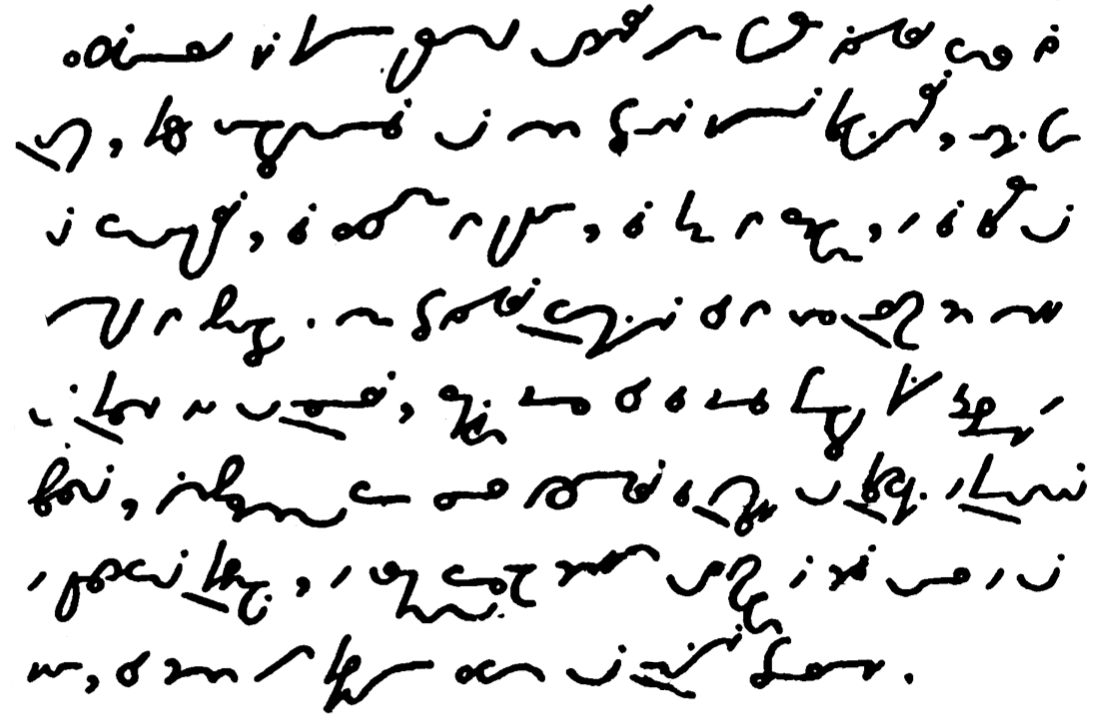
Key
L’historia si puo veramente deffinire una guerra illustre contro il Tempo, perchè togliendoli di mano gl’anni suoi prigioneri, anzi già fatti cadaveri, li richiama in vita, li passa in rassegna, e li schiera di nuovo in battaglia. Ma gl’illustri Campioni che in tal Arringo fanno messe di Palme e d’Allori, rapiscono solo che le sole spoglie più sfarzose e brillanti, imbalsamando co’ loro inchiostri le Imprese de’ Principi e Potentati, e qualificati Personaggi, e trapontando coll’ ago finissimo dell’ ingegno i fili d’oro e di seta, che formano un perpetuo ricamo di Attioni gloriose. —I Promessi Sposi, Introduction.
Latin
Adaptations
- Final um
 is written with English y.
is written with English y.
Specimen
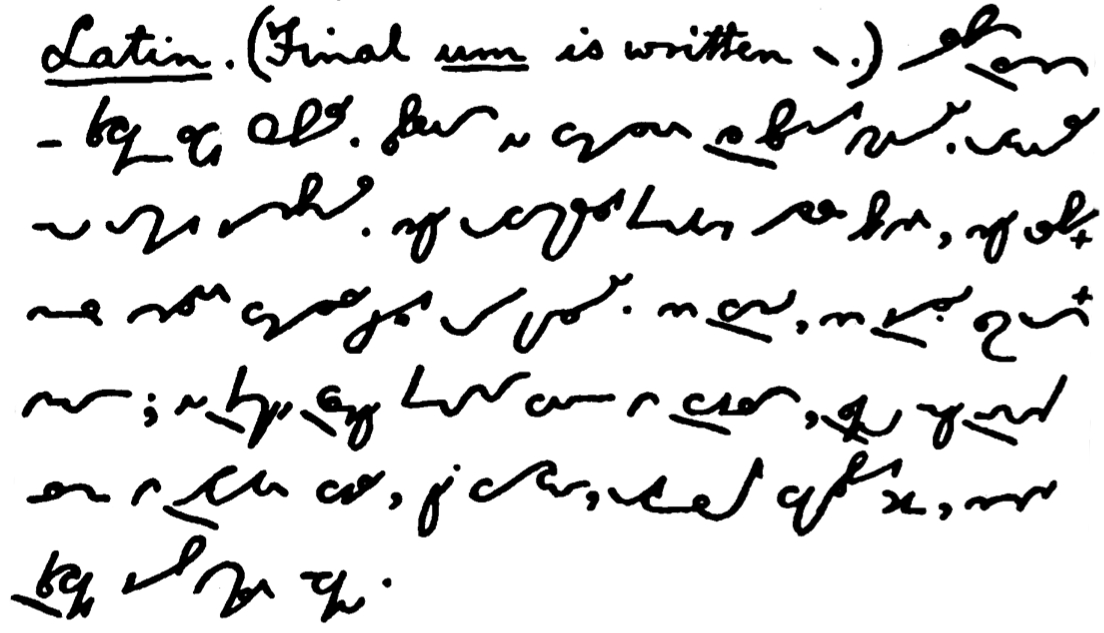
Key
Urbem Romam a principio reges habuere. Libertarem et consulatum L. Brutus instituit. Dictaturae ad tempus sumebantur. Neque decemviralis potestas ultra biennium, neque tribunorum militum consulare jus diu valuit. Non Cinnae, non Sullae longa dominatio; et Pompeii Crassique potentia cito in Caesarem, Lepidi atque Antonii arma in Augustum cessere, qui cuncta, discordiis civilibus fessa, nomine Principis sub imperium accepit. —Tacitus, Annals, I.1.
Greek
Adaptations
- English y becomes Greek η
 .
. - English straight ing becomes Greek ω

[Jeremy: That covers adapting Orthic to Greek. As for adapting Greek to Orthic, it appears that Callendar decided:
- Spiritus lenis is unmarked.
- Spiritus asper is marked by writing an English h
 .
. - All tone marks are omitted.
I guess that makes this an atonic Greek orthography. I expect diaeresis would be indicated by an angle joining, as discussed in “Diphthongs.”]
Specimen
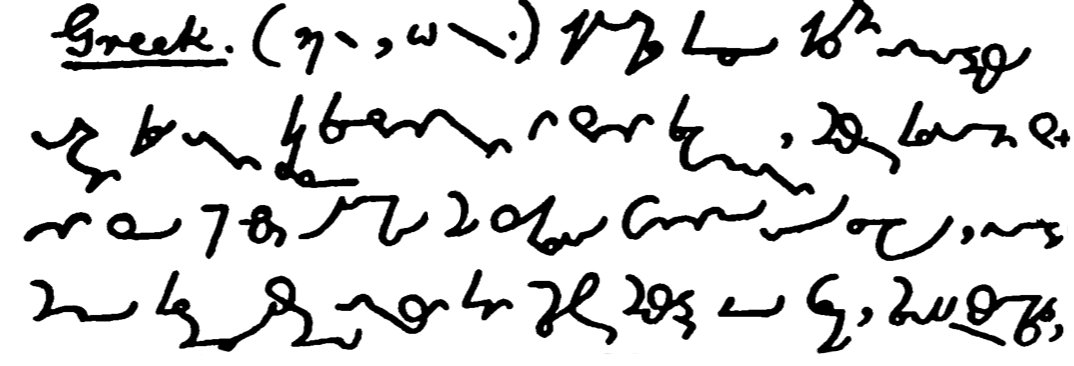
Key
Ἐπειδήπερ πολλοὶ ἐπεχείρησαν ἀνατάξασθαι διήγεσιν περὶ τῶν πεληροφορημένων ἐν ἡμῖν πραγμάτων, καθὼς παρέδοσαν ἡμῖν οἱ ἀπ’ ἀρχῆς αὐτόπται καὶ ὑμηρέται γενόμενοι τοῦ λόγου, ἔδοξε κἀμοὶ παρηκολουθηκότι ἄνωθεν πᾶσιν ἀκριβῶς καθεξῆς σοὶ γράψαι, κράτιστε θεόφιλε. —St Luke I.1–3.
Hints for the Reporting Style

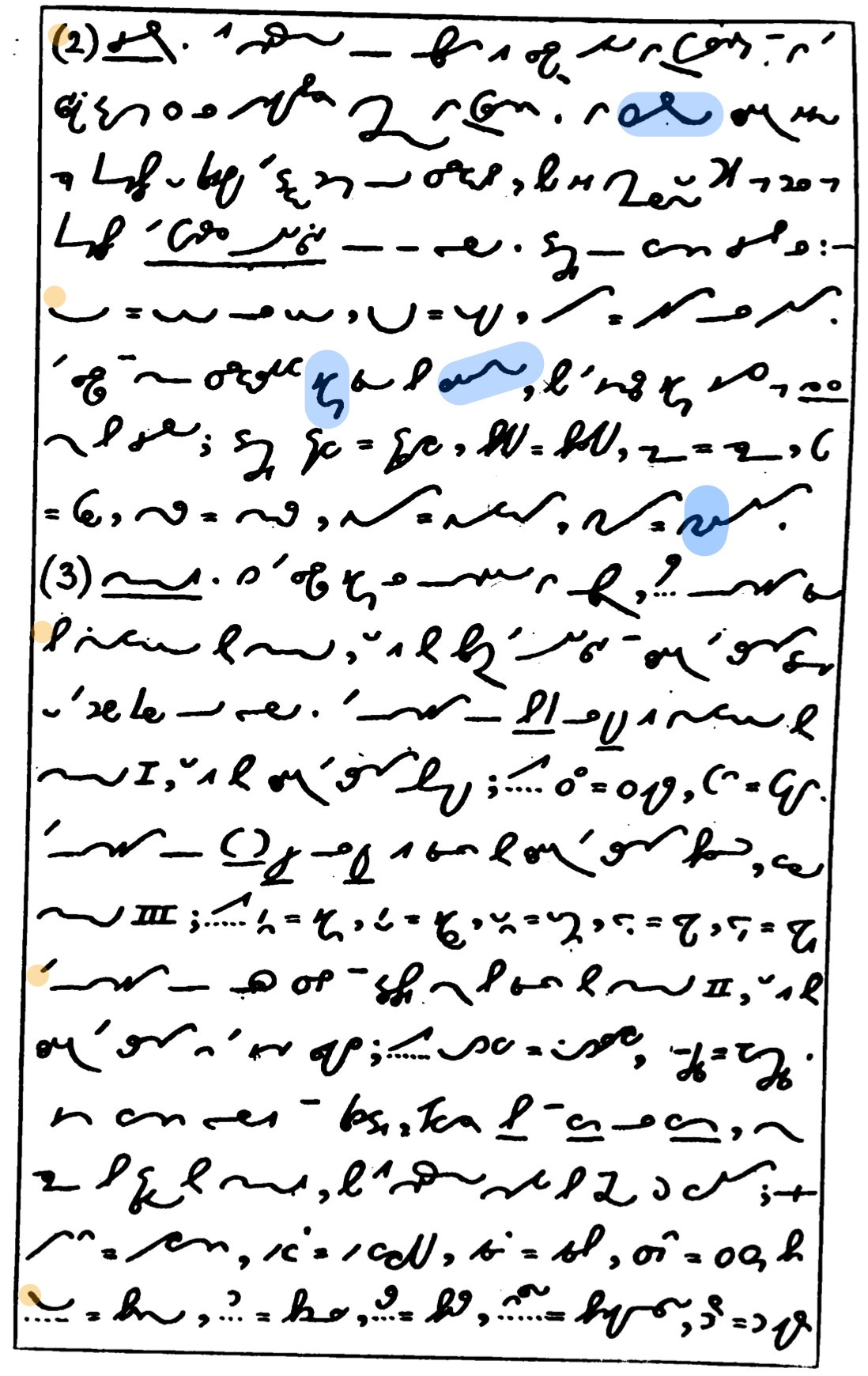
Key to Hints
Jeremy: This section is an original addition of this work. The images have a dot at the start of every fifth line to help you jump back and forth between the shorthand and this key.
The original text provided no key for these hints. If you wanted to learn the reporting style from the manual, you needed to learn to read ordinary style first.
The reporting style differs from the ordinary style only in the more extensive use of (2) abbreviation and phrasing.
Words are abbreviated as in longhand by the application (3) of the general principle given in §10. This method is so simple that with a little (4) practice any reporter can easily extemporise suitable abbreviations for himself, according to the (5) context of the subject upon which he is engaged. In order however to secure the greatest possible (6) uniformity of style among writers of-the system, it’s intended shortly to publish (7) a standard list of abbreviations for common words in the form of a vocabulary.
(8) It’s impossible to treat the subject of reporting adequately in the present publication, (9) but we will proceed to give a few hints which will be of use to students. (10)
-
In abbreviating a common word it’s generally sufficient to write the first 2 (11) or 3 letters of the termination, but terminations and inflexions which are evidently required (12) by the context may be omitted. Mere initials may be largely used for repeated names (13) and titles. Examples
- s = sir,
- l = lord,
- p = page,
- q = question,
- pr = principle,
- rep = (14) represent,
- imp = important,
- fou = found,
- ea = each,
- mu = much.
(15) In the case of short words it’s often better to join the last letter;
- pt = part,
- (16) sht = short,
- tn = town,
- ler = letter,
- ld = world,
- ming = morning.
(17) Letters which are weakly sounded, such as GH in STRAIT = straight, may often be left (18) out in abbreviating; initial H in such words as HIM HAS HAD especially in (19) phrases and compounds;
- chas = which has,
- shtnd = shorthand,
- chil = which will.
-
(1) SLURRING. This method of abbreviation is largely used in Gurney’s and in the (2) script systems which are universally employed in Germany. In hurried writing it is not (3) always possible to preserve the exact forms of-the characters, but it’s important to keep as far as (4) possible THE GENERAL OUTLINE of a word. Examples of common slurs are:
- (5) double-width D = DD or TD,
- deep double-width D = DV,
- UUN = USION or UTION. (6)
The larger and more characteristic signs should be retained, but the smaller signs such as L R (7) may be slurred; examples
- expeec = experience,
- beev = believe,
- aso = also,
- gt (8) = grt,
- mter = matter,
- eduun = education,
- nstuun = institution. (9)
-
MODES. If the larger signs are omitted in abbreviating, their omission should (10) be indicated by mode, that is by bringing the outline and writing the termination close (11) to the first part of-the word.
-
The omission of B P or V is indicated by (12) mode I, that is by writing the termination above; thus
- whichr = whichever,
- gn = given.
-
(13) The omission of G K J or QU is shown by writing the termination below, called (14) mode III; thus
- sn = sign,
- st = sight,
- tn = taken,
- wa. = wage,
- was = wages
-
(15) The omission of other characters and syllables may be shown by mode II, that is by (16) writing the termination on the same level; thus
- dif-ce = difference,
- a-plish = accomplish.
(17) Some common words and prefixes, especially b and con or com, may (18) also be expressed by modes, but this method must be applied with caution; –
- (19) un-n = uncommon,
- i-c. = i-c(o)nceive,
- isha. = ishabe (i shall be),
- chasn = (whi)ch has b(ee)n,
- (20) yd = bey(on)d,
- f = before,
- ter = better,
- nlnt = benevolent,
- fry = for every.
-
[Modal vs position writing]
[Jeremy: ‘Benevolent’ demonstrates how indication by mode differs from the fixed positions used in Pitman’s shorthand. While Pitman’s positions are relative to the line, Orthic’s modes are relative to the preceding character. Thus a raised n implies the prefix be-, and then an lnt raised relative to that n implies the v.]
Specimen (Moderately Abbreviated)

Key
Local Government.
I agree with Sir Charles Dilke in attributing the utmost importance to the question of local government in the future. I agree with him in the estimate which he has formed of the high place that question will occupy in the programme of the Liberal party. Experience justifies us in the hope that the Reformed Parliament will do much in the direction of completing the work which previous Reformed Parliaments have commenced. What was the main and the material advantage which resulted from the Reform Bill of 1832? It was the concession of municipal government to our country towns — a concession which has been highly appreciated, and which has been wisely used, and which has added most materially to the comfort and the happiness of the populations concerned. And what was the greatest result of the Reform of 1867? It was the extension of the functions of local governments by the creation of a system of education national in its scope, but locally administered. And it remains for the Reformed Parliament which will meet in 1886 to complete this work and to carry it further. I can conceive of no nobler and no more congenial task for those who represent the whole people than that of extending to the counties and to the metropolis and to the sister kingdom the liberties and the institutions which have conferred so great a benefit upon us the provinces. Gentlemen, local government is important altogether beyond its usefulness. It is the best political education, and I am convinced that the welfare and the contentment of the whole population can only be secured in proportion as the whole population are called in to take a part and a share in the obligations and the responsibilities of government. But, the extension of municipal institutions is not all that we have to do in the way of local government. We have in the future to elevate our conception of the meaning of the word. It is not merely a parochial and municipal, it is not even merely a provincial question, it is a national question also. What are the great problems of the future? We have to deal with obstruction in the House of Commons. We have to deal with the system under which the greatest legislative assemblage in the world has begun to lose its usefulness, and in consequence lose its influence. And that result can never be accomplished as long as the Imperial Parliament is burdened with an ever increasing amount of petty detail with which it is incompetent to deal, and which ought to be referred to other bodies.
What are the two greatest and most pressing needs of our time? I think most men would say the provision of healthy decent dwellings in our large towns at fair rents, and in the country facilities for the labourer to obtain a small plot of land which he may be able to work.

 rob’d
rob’d
 object
object
 able
able
 bray
bray
 absurd
absurd
 subtract
subtract
 subvent
subvent chair,
chair,  Christ,
Christ,  ache, cp.
ache, cp.  ahead.
ahead.
 suckle
suckle
 close
close
 crutch
crutch

 judge
judge

 fiddle
fiddle
 dread
dread

 dwell
dwell if (not
if (not  ).
).
 soft
soft
 puff’d
puff’d
 rifle
rifle
 afraid
afraid
 skiffs
skiffs
 high
high
 glory
glory
 agree
agree
 sign
sign may be curved either way like ea; thus,
may be curved either way like ea; thus,  social,
social,  optician;
optician;  chief.
chief.
 half
half
 walk
walk
 help
help
 wilt
wilt
 salve
salve
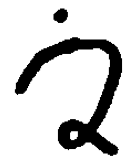 imply
imply
 limb
limb

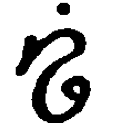 singer
singer
 inspect
inspect
 since
since
 inches
inches
 India
India
 infer
infer
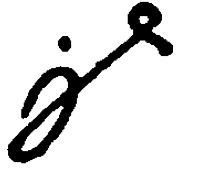 injury
injury
 unless
unless
 sense
sense
 sent
sent
 sink
sink
 inquest
inquest
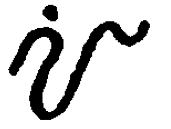 invent
invent oar, cp.
oar, cp.  or;
or;  oak.
oak.
 toil
toil
 out
out
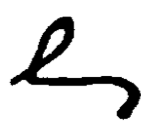 boys
boys
 spear
spear
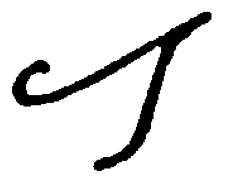 cusps
cusps
 phrase
phrase  phlegm
phlegm
 place
place
 present
present
 depth
depth




 work
work
 learn
learn


 is distinguished from sr
is distinguished from sr  by the way it is joined; thus; cp.
by the way it is joined; thus; cp. shed-
shed-  Tisri-
Tisri-  shred-
shred-  school
school
 scent
scent

 slew
slew


 sphere
sphere
 square
square
 still
still
 answer
answer
 sketch
sketch
 turtle
turtle
 truth
truth
 two
two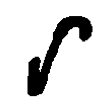 seen,
seen,  sun.
sun.
 guard
guard
 suit
suit
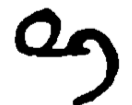 hawk
hawk
 owls
owls
 dawn
dawn
 exhort
exhort
 expense
expense
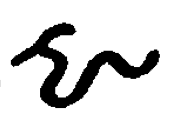 extent
extent





















































